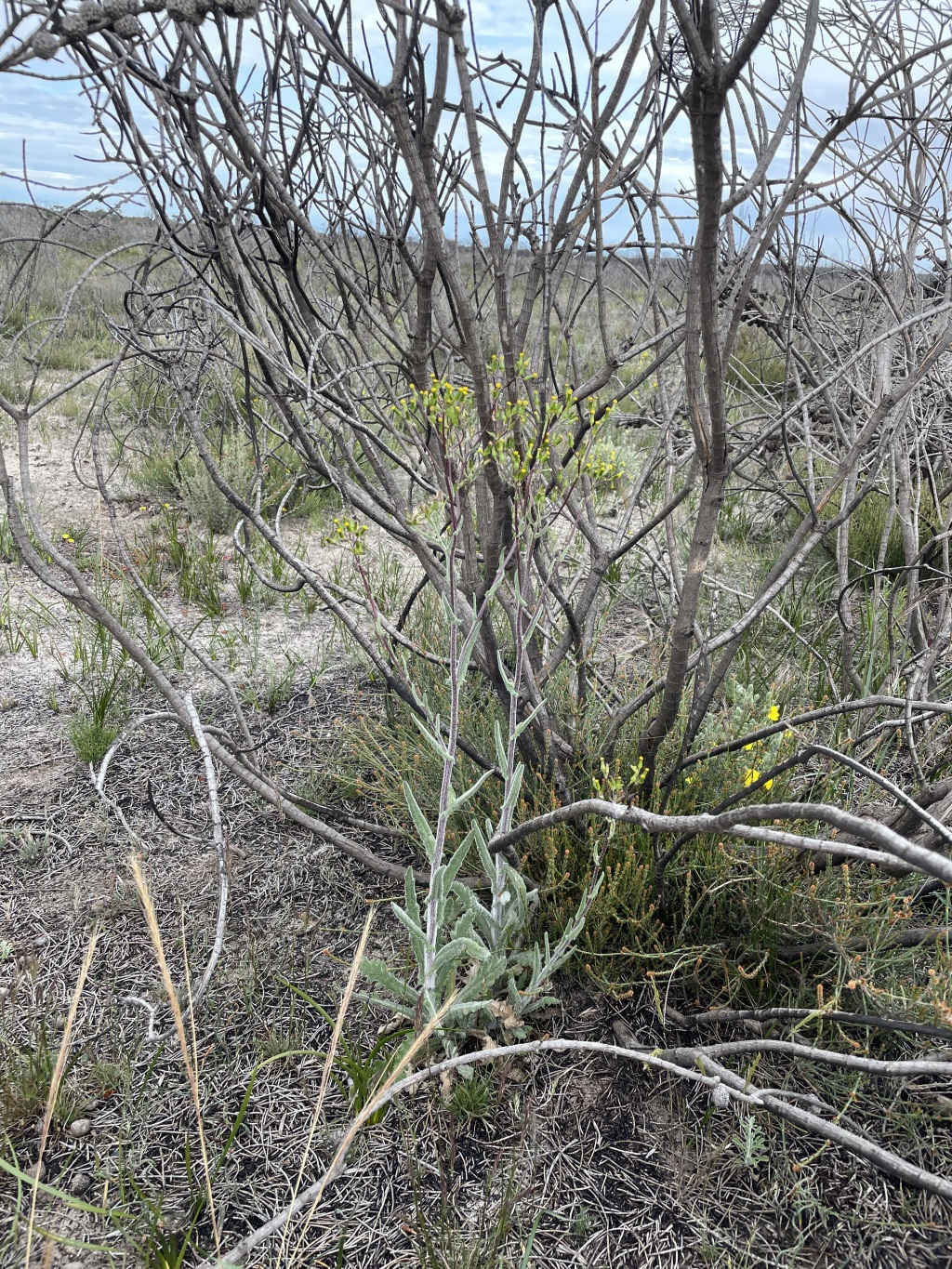Senecio hispidissimus
I.Thomps. Coarse FireweedErect annual to 1.5 m high; stems densely coarse-hairy, density reducing upwards. Leaves sessile, auriculate, coarse dentate to lobate or occasionally not dissected, with remotely and sparsely denticulate margins, both surfaces moderately to densely coarse-hairy; mid-stem leaves narrow-elliptic or linear in outline, 6–13 cm long, 1–3.5 cm wide; upper leaves narrow-oblong to narrow-lanceolate. Inflorescence corymbose, typically with 10–100 capitula; capitula non-radiate; involucre cylindric to narrowly cylindric, (5.0–)6.0–9.0 mm long, glabrous; bracts mostly 11–14; bracteoles present; florets 20–45, bisexual and female. Cypselas cylindric to narrow-ellipsoid, 1.5–2.8 mm long, tan or brown, papillose-hairy in dense lines; pappus of slender hairs, 6–7 mm long, deciduous. Flowers spring–summer.
LoM, MuM, Wim, GleP, VVP, GGr, DunT, EGL, WPro. Also SA, Tas. Grows in sandy soil in heathlands, woodlands and shrublands in lowland areas of Western Victoria south from Little Desert and east to the Grampians with a disjunct occurrence at Wilson’s Promontory.
A few collections from southern Victoria have narrower capitula with fewer florets and less densely hairy stems than is typical of this species possibly because of introgression with Senecio hispidulus (Thompson 2004a).
 Spinning
Spinning

